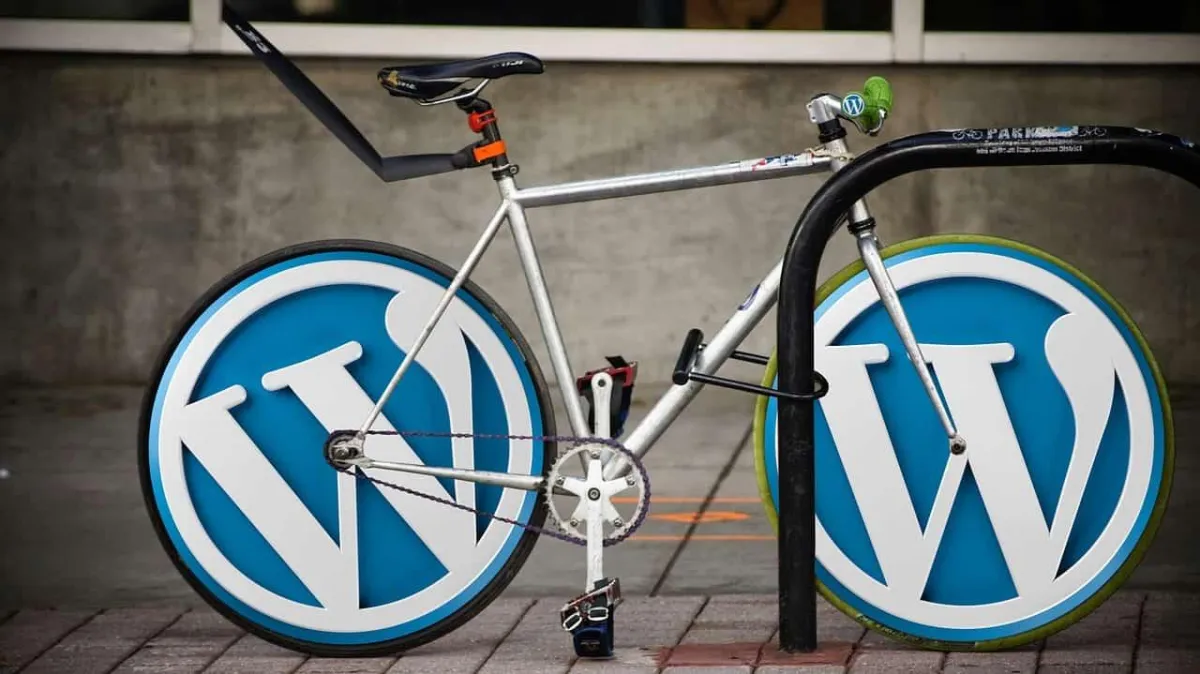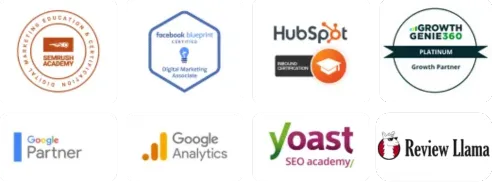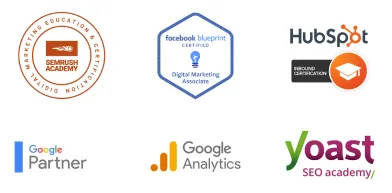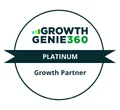TO LEARN IS TO GROW
Learning Center
We do our research and publish our results. Should probably call this the Growing Center.


I Need to Come Up with a Website Real Quick– What Should My Site Have?I Need to Come Up with a Website Real Quick– What Should My Site Have?
Nowadays, you can easily set up your own website. Discover what you would need to have your site up and running right away.
One of the greatest things about websites today is that you can easily set one up yourself. Sure, you’ll find no shortage of web designers and web developers to build one for you, but if you’re looking to create a basic site from scratch, a self-hosted WordPress site is the way to go. WordPress continues to be a very popular site-building system today as it is easy to install, extremely versatile, and built for growth. WordPress powers more than two million websites all over the world, including those for big brands like The Walt Disney Company, BBC America, Vogue, Sony Music, and TechCrunch, among others. WordPress can work with your small starter site and can continue to power you even as you scale and grow into a big brand yourself. So maybe you’re considering turning one of your hobbies into a business, thinking of starting a blog, or maybe you’re looking to develop your skills at digital marketing. Let’s say you’d like to set up a quick brochure-type website as an example. What then would you be needing right away to have your site up and running right away?
First Things First
Let’s get a few things straightened out right away. Just like any endeavor, one of the first things you need to have figured out right away is: what is the purpose of my website? What exactly am I setting out to do with my new site? By establishing your mission objective, you can then prioritize which functions you absolutely need right now, and which functions you can have a little later after you’ve set up shop. This way, you don’t overwhelm yourself right from the start. For purposes of our discussion, let’s say you want to quickly establish your online presence by getting your brand out there through your new website, with a bit of information about your company, your products, and your services.
Getting Things Started
Let’s assume you got yourself a domain name and a hosting account to go with it. You can ask your hosting company to make sure your domain is properly “parked” in your hosting account, which means you can now build your WordPress site on it. Most hosting companies have a dashboard that allows you to install all sorts of content management systems– such as WordPress– onto your domain. So, go right ahead and install WordPress; it shouldn’t take more than five minutes to do so. Make sure you:
Name your new site and add a clear (yet concise) description of what it’s all about.
Write down your username and password. Don’t use “admin” as your username, and it is encouraged you use a strong password– one that uses both uppercase and lowercase letters, as well as numbers, and perhaps a special character or two.
Enter your email address as the administrator of the site.
You should now have a vanilla version of WordPress. We can change the appearance and add plugins later. While you’re in touch with your hosting company, go right ahead and ask about your SSL certificate for your domain. Most new accounts now come with a free SSL certificate, so if you have it, you might as well make sure it’s set up correctly. Your SSL certificate secures your domain, making it more trustworthy, especially when you’re thinking of doing e-commerce or capturing leads later.
Configuring Your WordPress Site
Straight out of the box, your WordPress site comes with a couple of default themes, but if you’ve purchased a theme, or already have a theme in mind, go right ahead and set that up. Themes act sort of like “skins” changing the appearance of your site, as well as providing you with several options for further customizing the site, such as allowing you a change in color, layout, fonts, and so on. And you can do so without messing up all your content. At this point, set up all your branding materials: you can have a custom header on your home page, your brand’s logo, and other graphics, video, and other media you’d like to use to further reinforce your brand. You might even want to set up your website’s color and font settings to match your brand’s.
Set up your date and time via your WordPress Dashboard > Settings > General, and enter your time zone and preferred date/time format.
Set up your permalinks via your WordPress Dashboard > Settings > Permalinks > Select “Post Name”. Every time you now create a new page or post, WordPress will create a URL (a web address) that’s just a little more search-friendly.
Make your site visible to search engines via your WordPress Dashboard > Settings > Reading. Be certain the “Search engine visibility” box is NOT checked. Keep your site visible to search engines even as you build it.
Beef Up Your Security
Website security is extremely important, so you might as well set up your site to be protected from the most common WordPress attacks. Let’s install some free (but highly recommended) WordPress security plugins:
Akismet Anti-Spam – aids in screening your comments for spam
Login Lockdown – helps against brute force attacks so those that enter the wrong username/password combination are denied access by locking them out of your system.
Prevent XSS Vulnerability – protects you against attempts to write in bits of code in your WordPress files
Sucuri – one of the most top-rated security plugins around. There is a paid version with a ton of other features, but the free version should be more than enough for your starter site.
Vaultpress – another freemium service; this one creates real-time automated backups of your website
Wordfence – perhaps the most popular WordPress security plugin around, giving you a firewall, protection against brute force attacks, and other useful security tweaks even with just the free version.
WP Anti-clickjack – prevents attempts to insert other links on top of your own; usually, those that go to other affiliate websites
Attacks against your site are usually carried out by other malicious programs. Some of the more common attacks include DoS attacks (Denial of Service, where hackers attempt to overload your site so your hosting server shuts you down), brute force attacks (where hackers attempt to guess your username and password), clickjacking (where hackers try to rewrite your links so it redirects elsewhere) and other hacking attempts to alter bits of code on your website files or on your server.
Site Load Speed
Not just a main consideration for SEO, but also one for the overall user experience, is your site load speed. Visitors generally don’t like sites that load slowly.
A3 Lazy Load – holds back on image rendering until a user scrolls down your site, allowing other page elements to load first, greatly helping with page load time.
Lazy Load for Videos – same as A3, but for embedded video clips instead.
Smush – helps in compressing photos and other graphics; keeping your visual media’s quality while greatly reducing the sizes of individual files.
WP Fastest Cache – serves a “stored” version of your post or page. This plugin alone should cut your site load time by two to three seconds.
W3 Total Cache – has been one of the most popular WordPress cache plugins for many years; use this as an alternative to WP Fastest Cache if you prefer.
Other Essential Plugins
Covering a lot of other ground such as administrative tasks and SEO, here is a list of other plugins you might want to install for your new WordPress site.
All-in-One SEO Pack – allows you to enter proper meta descriptions and titles around keywords or key phrases; these are what Google displays on search results, so it helps enormously with your on-page optimization.
All in One Schema.org Rich Snippets – aids in making your site’s entry on search engine results look better and more relevant for users
Disable Comments – not all your pages or posts have to receive comments, so this plugin should come in handy.
Everest Forms – great for building an easy contact form for your site, as well as other forms you might decide to use later on.
Google Analytics – a great tool for understanding and monitoring incoming traffic, allowing you to spot trends, keep track of demographics, and lots of other useful visitor information
Google XML Sitemaps – helps web crawlers better index your site, making you a lot more search-engine friendly
Metatag Manager – allows you to enter the right keywords for your posts and pages so it helps reinforce your SEO efforts
Redirection – handy for spotting broken links on your site, helping you manage 301, 404, and other similar errors for when you start to have a lot more content.
WP-Optimize – great for keeping your WordPress databases clean, optimizing your site for best performance.
Yoast SEO – a popular alternative to the All-in-One SEO Pack; some people just prefer this, so using Yoast or All-in-One SEO is really just a matter of preference.
Note: there are a ton of sites and lists out there with a good number of recommended WordPress plugins. You’re free to explore these later on once you have your site up and running. As you take note of your preferences for various plugins, keep in mind that you should only install (and activate) the plugins you need. Way too many plugins on your site may slow down your overall site speed, and certain plugins might be incompatible with others currently running on your website.
Let’s Set Up Some Pages
By this time, you’ve laid down the foundation for an awesome new site. All you need now is to set up your pages and add some content.
Your Home page. Decide if you want your Home page to be a static page, or an archive of your blog posts. Go to your WordPress Dashboard > Settings > Reading to set this up. If you want your Home page to be a static page, you’ll need to create two pages first: a blank page that will serve as your blog archive, and a second page you’ve created and filled up with some content that will then serve as your Home page.
Your About page. Fill this page up with a couple of paragraphs on what your site is all about, who you are as a brand or as a company, and maybe put up a few photos that best represent you and your core values.
Your Contact page. Incorporate the short code from your contact form plugin here. You can include further information on how customers or clients can get in touch with you: via phone, by visiting your office, or via social media.
Create a Privacy Policy via your WordPress Dashboard > Settings > Create new privacy policy. This page has important implications for GDPR compliance and is particularly of significance once you start monetizing your site.
Create pages for your Products and Services. Whatever it is you’re selling or promoting, you can now set up different pages for each with all the useful information your clients would need– features, benefits, pricing, delivery options, payment options, and so on.
Create pages for your Products and Services. Whatever it is you’re selling or promoting, you can now set up different pages for each with all the useful information your clients would need– features, benefits, pricing, delivery options, payment options, and so on.

More Content
By this point, your site should be ready to make its grand debut online, with just enough content about you and your company, as well as your products and services. Your clients have a way to get in touch with you for more information, and your site is also adequately protected against online miscreants and other attempts at breaking into your site. So now, you may want to consider a consistent and regular output of content. We’re talking about helpful, market-relevant articles, bits of advice, recommendations, and other resources to keep your audience engaged. Remember, quality is better than quantity, so you’re better off publishing one piece of awesome content every month rather than churning out fluff and rehashed content every day.
Even More Next Steps
While our goal is to get your new website built from scratch quickly, we would still be able to come up with a site that looks clean and professional-looking, along with plenty of options for customizing it even further later on. Even with a basic WordPress site, you’ll still be able to do so much more with it later on, should you be so inclined:
You can add more pages for any additional products and services, as well as promotional efforts, events, and other items about you and your brand.
You can add new sections for just about anything
You can give your site a brand-new look with better artwork, custom design elements, newer graphics, and more.
You can add all the photos and videos you need
You can use it to capture leads
You can monetize by means of advertising, sponsorships, and affiliate marketing
Continue reading: Minimalist Web Design: Is It Just a Trend or Does It Improve User Experience?

Furthermore, using plugins, you can extend the functionality of your site even further down the road, like e-commerce capabilities, automated cross-publishing to your social media pages, paid membership integration, and more. With your new site, you can launch new content marketing campaigns, delivering all sorts of helpful, relevant media for your target audience. You can also build new landing pages to capture traffic from your future PPC and online advertising efforts.
A Final Word on Setting Up a Website Quickly
Work on your new business website is almost never done; you’ll always want to make a few tweaks and improvements every now and then. Hopefully, however, this article helps you figure out which functions you need to launch your site right way, and which ones can wait for later.
We haven’t even touched on extended capabilities, such as integrating your site with your email marketing, your social media, payment gateways, membership sections, directories, learning platforms, advertising, and others. Again, WordPress is an extremely versatile option for website owners, as it allows you to create just about whatever site you want, while keeping all your content and media intact, even as you switch themes or add new functions.
Once your site is up and running, and if you have adequate backup and security systems in place, feel free to explore other recommended plugins and themes that you feel would be more in line with your brand.
Built for Growth. Backed by 25 Years of Trust.
For over two decades, LOJO has been a trusted partner to hundreds of businesses just like yours. Whether working directly with owners, managers, teams, or boards of directors, our goal remains the same: to be a reliable and results-driven asset to your business.
Over the years, we’ve carefully built a team of experts—each selected for their unique skills, strengths, and personalities. Our clients choose LOJO because they know we genuinely care about their success.
And after 25 years of helping businesses grow, we’re more committed than ever.


Built for Growth. Backed by 25 Years of Trust.
For over two decades, LOJO has been a trusted partner to hundreds of businesses just like yours. Whether working directly with owners, managers, teams, or boards of directors, our goal remains the same: to be a reliable and results-driven asset to your business.
Over the years, we’ve carefully built a team of experts—each selected for their unique skills, strengths, and personalities. Our clients choose LOJO because they know we genuinely care about their success.
And after 25 years of helping businesses grow, we’re more committed than ever.




Matthew Rogers, President
iProspect Check
After spending several months reviewing multiple proposals from several different companies we engaged LOJO to develop a new website that represents our company effectively. We worked initially with Stephen Platte who helped create the scope of the project. Stephen was knowledgeable and always followed up with me on time and as promised.
He "closed the deal" for LOJO with his professionalism, service orientation and easy going approach. Once we signed the contract we were introduced to Jay Kelly who would be the creative lead for LOJO. This was the most challenging part of the project for my company, as there was no shortage of ideas from our side. Jay managed the project flawlessly, and once we had all agreed to the design, Jay introduced us to Eric.
Eric Lay is one of the founders of LOJO. Eric took the design we had developed and brought it to life. We delivered content as quickly as he requested it. Eric kept the project on task and we responded by exceeding every deadline for content. In turn, once provided, literally not a day went by that Eric didn't add the content and take the next step. In just a few weeks we launched our new website. Eric is a pleasure to work with.
His positive attitude and consultative approach really enhanced the experience and made a big difference for us in the outcome of our project. We would welcome you to visit our website to take a look at the quality work of LOJO. We are very pleased with LOJO and look forward to working with them in the future as we pursue an aggressive SEO strategy."
After spending several months reviewing multiple proposals from several different companies we engaged LOJO to develop a new website that represents our company effectively. We worked initially with Stephen Platte who helped create the scope of the project. Stephen was knowledgeable and always followed up with me on time and as promised.
He "closed the deal" for LOJO with his professionalism, service orientation and easy going approach. Once we signed the contract we were introduced to Jay Kelly who would be the creative lead for LOJO. This was the most challenging part of the project for my company, as there was no shortage of ideas from our side. Jay managed the project flawlessly, and once we had all agreed to the design, Jay introduced us to Eric.
Eric Lay is one of the founders of LOJO. Eric took the design we had developed and brought it to life. We delivered content as quickly as he requested it. Eric kept the project on task and we responded by exceeding every deadline for content. In turn, once provided, literally not a day went by that Eric didn't add the content and take the next step. In just a few weeks we launched our new website. Eric is a pleasure to work with.
His positive attitude and consultative approach really enhanced the experience and made a big difference for us in the outcome of our project. We would welcome you to visit our website to take a look at the quality work of LOJO. We are very pleased with LOJO and look forward to working with them in the future as we pursue an aggressive SEO strategy."

Matthew Rogers, President
iProspect Check
The team at LOJO were wonderful to work with. They are well organized and very patient as we worked through our marketing strategy and developed a well thought out and clear action plan at a reasonable price. We will definitely be back for our future campaign needs."

Jon Crosby, Founder
Dazil

